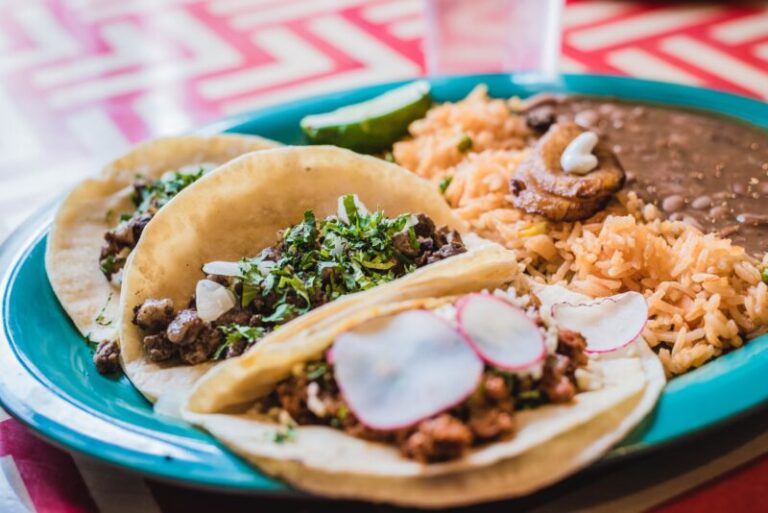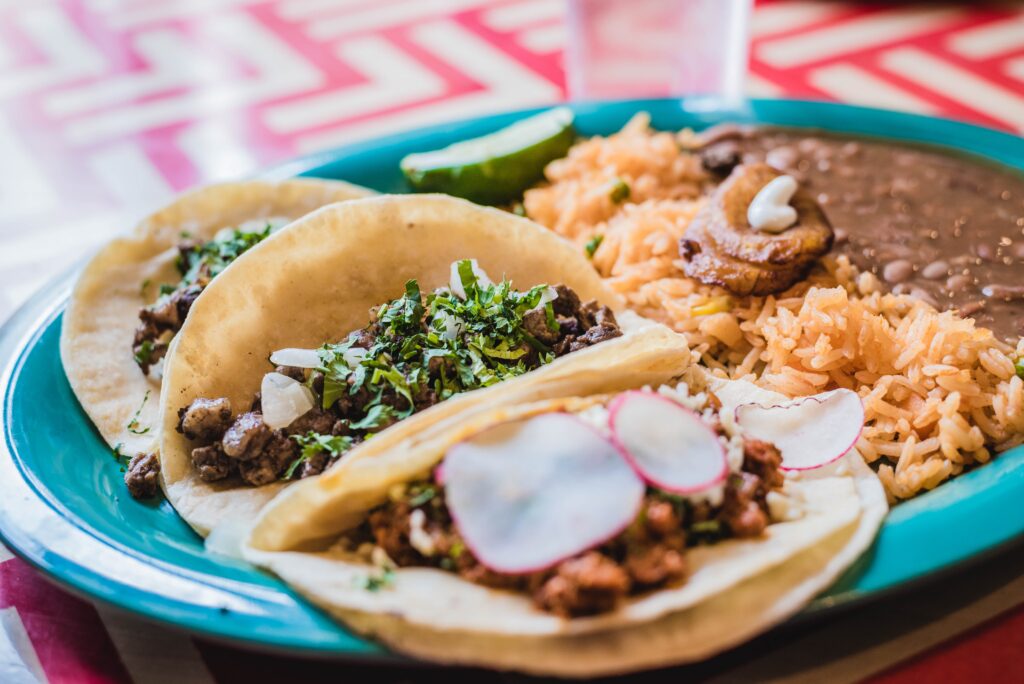
If you’re visiting Mexico, you’re in luck because it’s a gastronomic paradise.
Much of the food is grown locally and spices rule, so the food choices? ¡Excelente! (Excellent!)
In this post, you’ll find out exactly how to order food in Mexico.
I’ll share with you the Mexican Spanish phrases to order delicious, authentic food just the way you want it and get that comida (food) on your plate!
Contents
Download:
This blog post is available as a convenient and portable PDF that you
can take anywhere.
Click here to get a copy. (Download)
Ordering Food in Mexico
Deciding Where to Eat
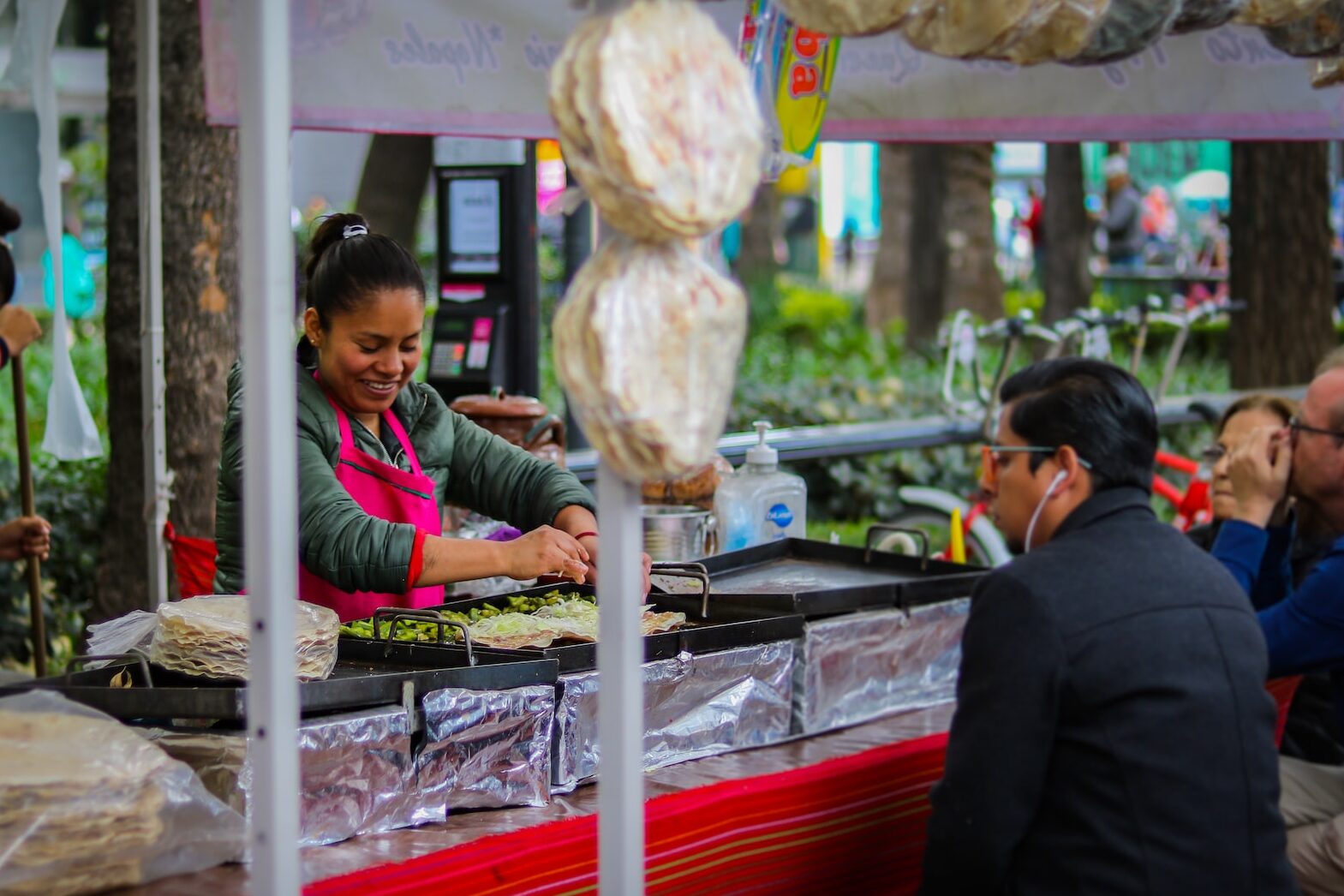
You may order from a street stand where food is sold. Or you might head to a restaurant. In either place, you may want to take your food with you. If you do, ask for it to go.
Un puesto
(A street stand)
Un restaurante
(A restaurant)
Unos tacos para llevar, por favor.
(Tacos to go, please.)
Talking to the Waiter or Waitress
In a Mexican restaurant you’ll be served by either a waiter or waitress, and you can use these terms in Spanish (see below!) to get their attention during a meal.
It’s considered rude to say ¿Qué? (What?) if you don’t immediately understand the waiter when you’re ordering. ¿Mande? is a slang way to ask someone to repeat something if you need to hear it again.
When asked about something to drink, notice that in Mexico, they don’t use beber (to drink) to ask the question.
If you’re looking for a beer to go with your meal, chela or cheve are the slang terms for beer in Mexico.
Un joven
(A waiter)
Una señorita
(A waitress)
¿Qué precio tiene?
(How much does it cost?)
¿Gustan algo de tomar?
(Would you like something to drink?)
Una chela, por favor.
(A beer, please.)
Asking About Ingredients
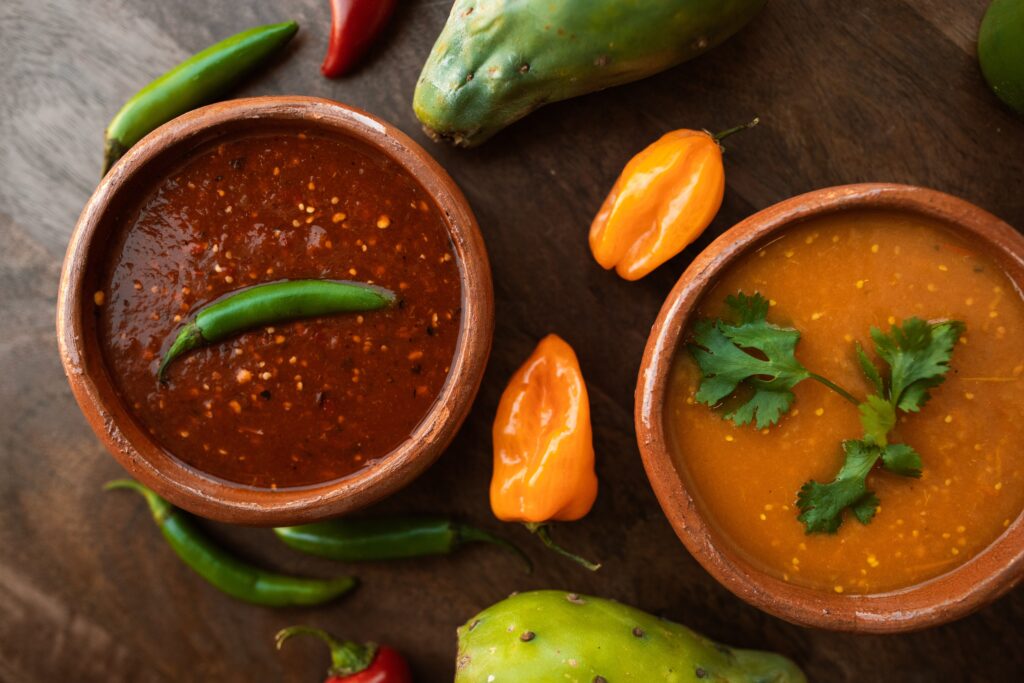
Just in case you have some dietary restrictions or want to make sure what you’re getting, you can also ask some questions about what’s in the food.
Notice that the verb here is llevar (to wear, to take, to carry), which has several meanings, but is often used in the context of food ingredients.
¿Qué es eso
/ esto?
(What is that/this?)
¿Qué lleva el mole?
(What’s in the mole?)
¿Lleva cebollas
/ cilantro?
(Does it have onions/coriander?)
¿Los tacos llevan queso
/ carne?
(Do the tacos have cheese/meat?)
¿Tiene algo sin queso
/ carne?
(Do you have something without cheese/meat?)
Placing Your Order
Ordering is pretty informal in most eateries and you most likely won’t only eat in restaurants. There are a few easy options for structuring sentences and once you get them down you’ll be able to place an order anywhere.
Traer (to bring) is also a very common way to make a request.
¿Qué va a querer?
(What would you like to order?)
Voy a querer…
(I’ll have…)
¿Me traes una quesadilla con… ?
(Can you bring me a quesadilla with…?)
Ordering Tacos in Mexico
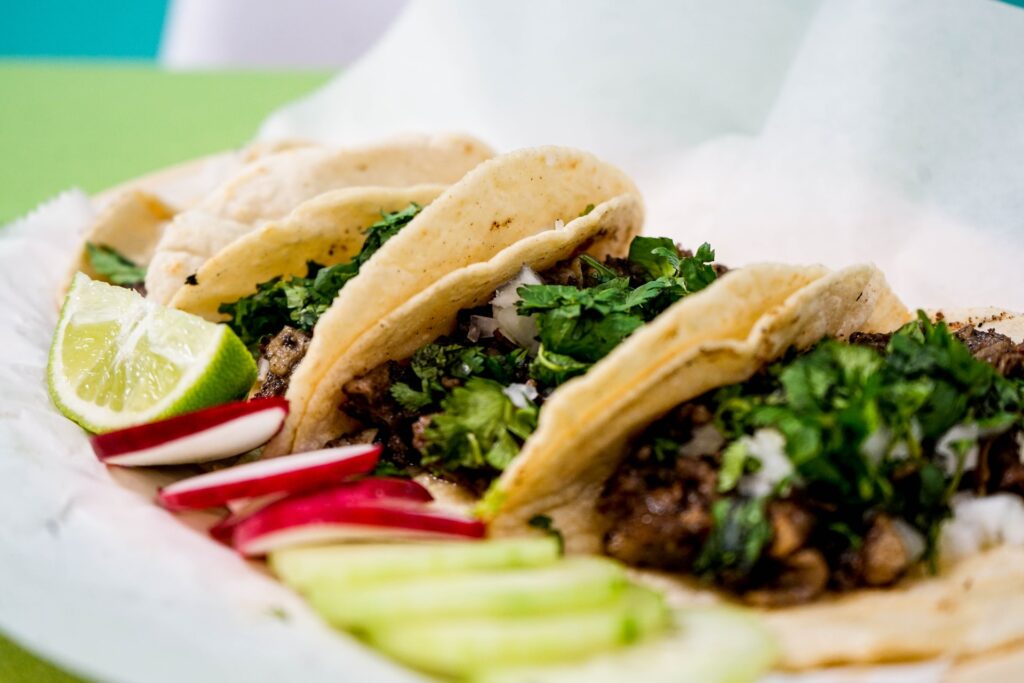
Tacos are a Mexican staple food, and there’s a lot of vocabulary just for ordering this dish and the accompanying fillings and toppings.
Aside from mixing up the fillings, there are a variety of toppings to choose from so there’s really no “standard taco”—each can be unique. Some toppings that are readily available are onions, fresh cilantro and avocado sauce.
Salsa, the type most Americans are used to seeing, comes in either verde (green) or roja (red) varieties. Sometimes spicy corn or cactus salsa is on the menu, as well.
The cream isn’t sour cream like Mexican restaurants in the U.S. usually use, but a thinner cream that’s milder and just a little bit sour.
Once you’ve chosen the basic taco fillings, you’ve still got choices to make. You might request yours a few different ways.
Me da dos tacos con salsa de maíz, por favor.
(I’ll get two tacos with corn salsa, please.)
Con crema, por favor.
(With cream, please.)
Con nopales, por favor.
(With sliced cactus, please.)
Con refritos, por favor.
(With a layer of refried beans, please.)
¿Con verduras?
(With cilantro and onions?)
For the last one, although verduras literally means vegetables, the server is asking if you want cilantro and onions on the taco. ¡Sí! (Yes!) is usually my answer to that question!
Digging in and Describing Your Meal
When the food arrives, Mexicans, along with all Latin Americans, say the Spanish equivalent of “Bon appétit.” There’s no perfect translation but it’s right up there with the English invitation to “Enjoy your meal!”
If you still look hungry, you may be asked if you want more of whatever you’ve ordered. Here’s your cue to ask for second helpings from your waiter.
And of course, no meal is complete until the compliments for the food are offered.
In Mexico, food is described favorably as rico (tasty), so a smile and a few of these phrases will show your appreciation. And with all the amazing food choices available in Mexico, you’re bound to say this a lot!
¡Buen provecho!
(Enjoy your meal!)
¿Me da otro?
(Would you give me another one?)
Rico
(Tasty, yum, nice)
¡Qué rica comida!
(What tasty food!)
¡Qué ricos tacos!
(What tasty tacos!)
¡Está muy rico todo!
(Everything’s so tasty!)
¡Estuvo delicioso!
(It was delicious!)
By now you have most of the phrases you need to order delicious meals in Mexico! If you want to get into more detail and learn even more phrases for ordering in Spanish, check out the article below.
Another way to practice what you’ve learned here and brush up on your Spanish is to watch different Spanish videos. You could search for food-related shows in Spanish on Netflix, or check out different Spanish videos related to food on YouTube. You can also try FluentU to watch Spanish videos (many of which are related to food).
What Foods Can You Try in Mexico?
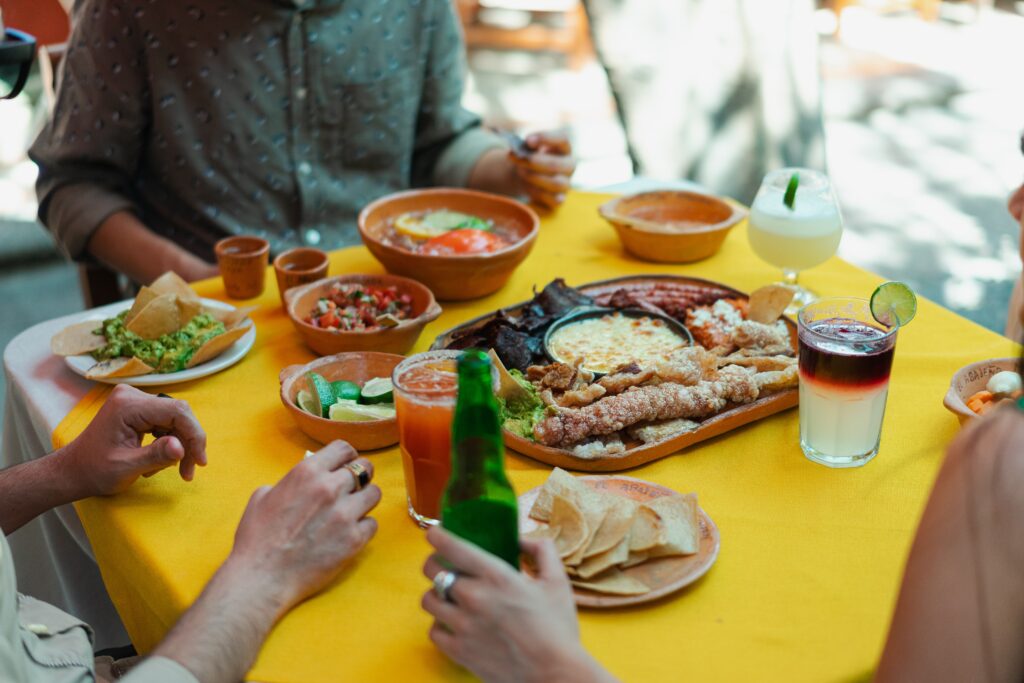
Mexican recipes are handed down from generation to generation.
If you want authentic Mexican food that hasn’t been Americanized, look for small restaurants. Many are family-owned and their indigenous recipes rely heavily on the same staples their ancestors used, including chilis and corn.
There are some dishes you should be on the lookout to try. They won’t be hard to find!
- Tortillas, both corn and flour, are handmade fresh daily in a tortillería, which is often a home where there’s a room set aside for tortilla making.
- Quesadillas are tortillas that are filled, usually with cheese but sometimes meat as well, before being grilled. Street vendors often offer them con grasa (deep fried).
- Mole is a generic term that can refer to any number of sauces, most of which are a combination of some kind of fruit, chilis and spices. It’s often just set in the center of the table to be spooned over your plate.
- Pico de gallo (sometimes called salsa fresca) is a mixture of chopped onions, tomatoes, cilantro, chilis and lime juice. It often goes on tacos.
- Carne adobada (marinated meat) may be on the menu. It’s generally pork (although any meat can be used) that has been marinated in a red chili sauce and spices before it’s cooked.
- Sopa azteca is also called tortilla soup and is a tomato broth served with fried tortilla strips floating in it. Sometimes it’ll contain meat but most often it’s vegetarian.
- Plátanos machos (plantains) resemble the bananas we’re accustomed to, but must be cooked before being eaten. They’re served in countless ways and can be fried, baked or even sautéed with butter and sugar to make a dessert. Dishes made with plantains are found in Mexico’s south, namely the Yucatán Peninsula.
- Churros are a must not only after dinner but also for casual snacking. They’re sold by street vendors and make the perfect crisp, cinnamon-covered take-along to hold you over while you’re sightseeing.
- Tequila is an alcoholic drink you might know, which is made from the blue agave plant.
- Horchata is a sweet rice-based drink that’s served chilled.
If you want to learn more about ordering Mexican food in Spanish, you could check out this video from Spanish and Go on YouTube to see the hosts order food at a real restaurant in Mexico:
The Differences in Mexican Spanish
Mexican Spanish is typically referred to as Latin American Spanish because it differs from Spanish spoken in Spain. Some Spanish restaurant vocabulary and phrases work in Mexico but they’ll only give you the foundation for ordering.
The vos (singular “you”) form isn’t used all over the country, though you may hear it to the south. And instead of vosotros to refer to the plural “you” like in Spain, in Mexico you’ll hear ustedes in its place.
On the street and in shops, you’re bound to hear a fusion of Spanish and English. Many words and phrases are a slangy combination of both languages.
And if you’re jonesing to get a better grip on your Spanish—while eating like a local!—maybe taking a language course while you’re in Mexico will help you build your skills on a full stomach.
Now that you’ve got the whole ordering process down, you’re set to try the range of tasty foods on offer in Mexico.
Happy eating!
Download:
This blog post is available as a convenient and portable PDF that you
can take anywhere.
Click here to get a copy. (Download)
And One More Thing…
If you’ve made it this far that means you probably enjoy learning Spanish with engaging material and will then love FluentU.
Other sites use scripted content. FluentU uses a natural approach that helps you ease into the Spanish language and culture over time. You’ll learn Spanish as it’s actually spoken by real people.
FluentU has a wide variety of videos, as you can see here:

FluentU brings native videos within reach with interactive transcripts. You can tap on any word to look it up instantly. Every definition has examples that have been written to help you understand how the word is used. If you see an interesting word you don’t know, you can add it to a vocab list.

Review a complete interactive transcript under the Dialogue tab, and find words and phrases listed under Vocab.

Learn all the vocabulary in any video with FluentU’s robust learning engine. Swipe left or right to see more examples of the word you’re on.

The best part is that FluentU keeps track of the vocabulary that you’re learning, and gives you extra practice with difficult words. It’ll even remind you when it’s time to review what you’ve learned. Every learner has a truly personalized experience, even if they’re learning with the same video.
Start using the FluentU website on your computer or tablet or, better yet, download the FluentU app from the iTunes or Google Play store. Click here to take advantage of our current sale! (Expires at the end of this month.)


